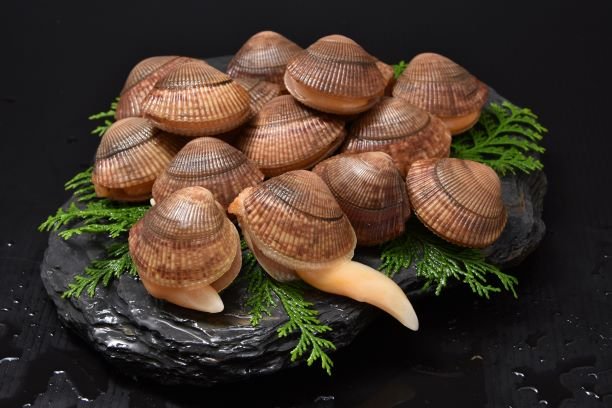Hirotawansan Ishikagegai
| Registration Number | 114 |
|---|---|
| Name of the GI | Hirotawansan Ishikagegai |
| Class | Fish and Shellfish |
| Date of Protection | 2022/02/03 |
| Producing Area |
Iwate Prefecture
Hirota Bay, Rikuzentakata City |
| Applicant - Name and Address | Hirotawan Gyogyo Kyodo Kumiai (Fisheries Cooperative Association of Hirota Bay) Tomari 102-4, Hirotacho, Rikuzentakata City, Iwate Prefecture |
Producing Area
"Hirotawansan Ishikagegai" is a clam (Clinocarium californiense) produced by collecting larvae in Hirota Bay and raising them in the bay. The clam shell is dark reddish brown and round, and the cream-colored foot is eaten. Among nutrients, the percentage of free amino acids is high. The flesh is characterized by nice chewiness and distinctive sweetness. It is highly rare and an indispensable article in high-class Japanese and sushi restaurants in Tokyo.
The larvae of "Hirotawansan Ishikagegai" are collected in the production area and raised in specific containers. The clams are harvested when the shell length becomes or exceeds 5cm. After removing dead and broken clams by checking them visually and/or olfactorily, the clams are shipped in sterilized sea water, which keeps them fresh.
Hirota Bay, or the aquaculture area of "Hirotawansan Ishikagegai", is along the coast of Rikuzentakata City, the southernmost coastal city in Iwate Prefecture. Abundant nutrients flow into the bay from the foot of Mt. Hikami (1) located on the north through the Kesengawa River.
In 1993, an aqua farming technology was established to utilize the deeply indented coastline, involving hanging tubs containing larvae of wild clams and sand in the sea. In 1996, a full-scale aquaculture started as the first in Japan. The tsunami during the Great East Japan Earthquake in 2011 caused catastrophic damage to fishing vessels, aquaculture facilities, materials, etc. Thanks to the efforts of fishermen and related organizations, the production recovered to 53t in 2018.
- Mt. Hikami (elevation: 874.7m) is located in the southeastern part of the Kitakami Mountains. Its foot spreads to Hirota Bay on the southeast and to Ofunato Bay on the northeast.


